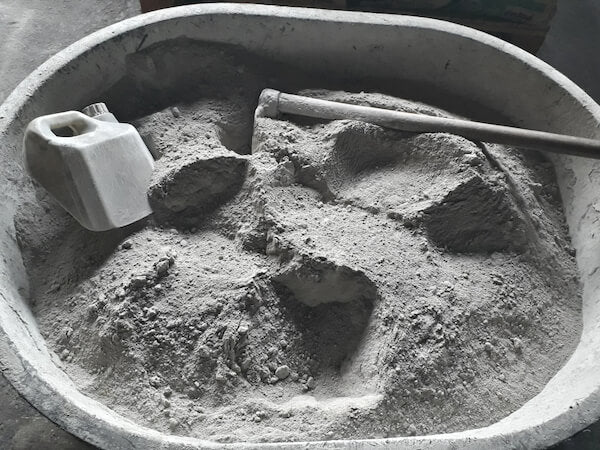
OSHA Concrete Safety
OSHA breaks all concrete related industries down into
two sectors which are "construction" and "manufacturing" sectors. The construction sector covers hazards related to all concrete work in construction operations. The manufacturing sector covers areas such as "ready mix plant operations", "concrete pipe manufacturing", and "concrete block and brick manufacturing". Understanding your responsibilities under OSHA requires a knowledge of which industry and sector your employees operate in.
Concrete Safety Hazards
The two main hazards associated with concrete in both concrete construction and concrete manufacturing are silica dust exposure and concrete burns. Silica is hazardous and must not be inhaled by humans. To guard against silica exposure, controls such as PPE (respirators) and engineering controls such as avoiding confined spaces when mixing are utilized by companies who want protection for their workers. Another concrete related hazard is concrete burns. Workers can receive first and second-degree burns if their skin is exposed to concrete during the mixing or pouring process. So it is parament to wear protective boots, gloves, and clothes to avoid skin contact with concrete mix.
One Time Exposure To Silica Dust
According to The Lung Health Institute, "It's possible to get silicosis from one exposure to a massive concentration of crystalline silica dust without a respirator". You might define "a massive concentration" as a large number of particles inhaled by means of either one long duration of exposure or a shorter exposure to a higher concentration or higher density of silica dust. If you have been exposed to silica at all, seek medical attention as soon as possible.
Cement Dust Exposure Symptoms
Cement dust or silica symptoms may come on soon after exposure or even years after exposure. It all depends on the type of silica you were exposed to, the amount you were exposed to and the duration of exposure. Here are some common symptoms associated with silica/cement dust exposure:
- Coughing
- Weezing
- Crackling sound while breathing
- increased breathing rate
- discoloration of the lips
Concrete Poisoning Treatment
If you have been exposed to cement or concrete mix or dust, seek medical attention immediately. Attempting to self diagnose is very risky and may result in more severe injury or illness.
Cement Burn Treatment
Cement burns can be very serious. They happen when the skin is exposed to concrete during the mixing process. The skin absorbs toxins in the concrete mix and is burned - very badly in some cases. If you have been burned by cement or concrete mix, seek medical attention immediately.
Concrete Safety Topics
Safety topics specifically for the concrete industry are not always easy to identify. Therefore, it's best to approach your search for these topics by looking for topics that deal with the hazards associated with concrete such as "silica dust" and "concrete burns". Our
safety meeting topic library will address silica dust and other important safety issues your company will face as a whole.
Concrete Pouring Safety Checklist
There are many types and sizes of checklists on the web for concrete pouring and concrete construction operations. We like
this one.
Concrete Safety Plan / Safety Manual
A concrete safety plan is defined differently by different people. This plan is either going to be a "site-specific safety plan" that addresses hazards on a specific project, or it will be a "company-wide" safety plan (which we call a safety manual). Most companies have both, so it's a good idea to locate each and customize to fit your company needs. Here's our
"company-wide" style concrete safety plan but you can also get the
concrete safety manual "bundle" which includes the manual and site-specific plan + many other documents you need to be safe and compliant.
Note: If you perform concrete "manufacturing" instead of concrete "construction" work, you'll want to use the following links instead of the ones above:
Concrete Safety Data Sheet
Concrete safety data sheets may be obtained by the product manufacturer or distributor of the concrete product. In some cases, the SDS is also printed on a sheet that comes with the concrete product or is printed directly onto the container or bag of concrete. However, sometimes the safety data sheet is nowhere to be found. In these cases, try searching for the manufacturer's name online and follow the query with the product name and SDS or safety data sheet in parenthesis. Here is a commonly used
Ready Mix product SDS example.
JHA For Concrete Pouring
Need a JHA or JSA for concrete pouring or other concrete work? We found a good one via the American Society of Concrete Contractors here:
JHA For Concrete Work.
